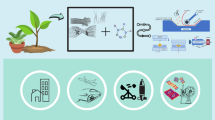Abstract
The viscous response of a coating formulation changes over several orders of magnitude after application onto a substrate. Furthermore, the performance and application attributes for a refinish basecoat formulation are slightly different from those of an OEM basecoat. The absence of a high temperature baking step during the refinish process necessitates that the paint exhibit very good antisag behavior as well as quick ‘dry to touch’ without compromising the flow and leveling properties of the coating as it dries. As most paint formulations are multicomponent in nature, it is always a challenge to precisely measure the impact of specific formulation components on the collective performance attributes of the applied coating. In this work, the focus has been to develop novel techniques that can be used to demonstrate a more quantitative measure of some of the performance attributes that rheological additives like cellulose esters can provide to automotive coatings. A series of pigmented basecoat formulations were prepared which contained cellulose acetate butyrates (CABs) of varying molecular weights at different levels based on the total solids of the coating formulation. The nonvolatile content of the formulations was also varied. The viscoelastic behavior of a typical automotive basecoat formulation during the drying process was then investigated using a novel rheological technique. Complex viscosity data (including storage and loss moduli as well as tan delta) were determined as a function of drying time and then compared to the macroscopic properties typically associated with a coating film as it dries. Thermogravimetric analysis (TGA) was also used to correlate the rheology of the metallic basecoat formulations with drying behavior of the coating. The final appearance of the coating was investigated by several microscopic techniques such as Laser Scanning Confocal Microscopy, Scanning Electron Microscopy, Atomic Force Microscopy, and Surface Profilometery, and attempts were made to correlate bulk measurements like ‘flop index’ with the microstructure of the coating.














Similar content being viewed by others
References
Wojtkowiak JJ (1979) Effect of Film Viscosity on Aluminum Flake Orientation in Thermoplastic Acrylic Coatings. J. Coat. Technol. 51(658), 111
Osterhold M (2000) Rheological Methods for Characterising Modern Paint Systems. Prog. Org. Coat., 40, 131
Osterhold M (2000) Rheological Behaviour of Automotive Paint Systems Modern Characterisation Methods Show Good Correlations to Observable Effects. Eur. Coat. J., 4, 18
Burrell H (1962). Glass Transition in Coating Formulations. Official Digest, Federation of Societies for Paint Technol., 34, 134
Day DR, Shepard DD (1988) Dynamic Cure and Diffusion Monitoring in Thin Coatings J. Coat. Technol. 60(760), 57
Koroleva EV, Machevskaya RA, Fedorova AN, Shode LG, Ruchkina AG, Soviet Union patent SU 1718088, 1992
Krisanov, VF, Ovcharenko, EE, Ignatova, NI, Method for Determining the Degree of Curing of Paints and Varnishes. Derevoobrabatyvayushchaya Promyshlennost, (3), 14–15 (1987)
Tauber A, Scherzer T, Weiß I, Mehnert JR (2002) UV Curing of a Pressure Sensitive Adhesive Coating Studied by Real-Time FTIR Spectroscopy and Laboratory Scale Curing Experiments. J. Coat. Technol. 74(927), 41
Sung CSP, U.S. Patent 4885254, 1990
US Patents filed: 2006-0123890A1 and US 2005-0132781A1
Williams M, Landel R, Ferry J (1955) The Temperature Dependence of Relaxation Mechanisms in Amorphous Polymers and Other Glass-forming Liquids. J. Am. Chem. Soc., 77, 3701–3707
Van Krevelen, DW, Properties of Polymers. (3rd ed.). Elsevier, New York, p. 513 (1990)
Baghdadi HA, Sardinha H, Surita R (2005) Rheology and Gelation Kinetics in Laponite Dispersions Containing Poly(ethylene oxide). J. Polym. Sci.: Part B: Polym. Phys. 43(2), 233–240
Ion L, Vergnaud JM (1995) Process of Drying a Polymeric Paint by Diffusion-evaporation and Shrinkage. Determination of the Concentration-dependent Diffusivity. Polym. Test. 14, 479
Vrentas J, Duda J (1977) Diffusion in Polymer-solvent Systems. I. Reexamination of the Free-volume Theory. J. Polym. Sci. 15, 403
Flory P, Principles of Polymer Chemistry. Cornell University Press (1953)
Yang C, Smyrl W, Cussler E (2004) Flake Alignment in Composite Coatings. J. Membr. Sci. 231(1–2), 1
Sung L, Nadal ME, McKnight ME, Marx E, Laurenti B (2002) Optical Reflectance of Metallic Coatings: Effect of Aluminum Flake Orientation. J. Coat. Technol. 74, 55
Kazuhi K, Toshiki T, Takakazu Y, Kazutoshi A (2002) Development of High Flip-flop Base Coating. Matsuda Giho, 20, 122
Acknowledgments
The authors would like to thank Dr. Li-Piin Sung and Aziz Rezig at the National Institute of Standards and Technology (NIST) for their help in analyzing the samples with the Laser Scanning Confocal Microscope.
Author information
Authors and Affiliations
Corresponding author
Rights and permissions
About this article
Cite this article
Bhattacharya, D., Seo, K., Germinario, L.T. et al. Novel techniques to investigate the impact of cellulose esters on the rheological properties and appearance in automotive basecoat systems. J Coat Technol Res 4, 139–150 (2007). https://doi.org/10.1007/s11998-007-9014-3
Published:
Issue Date:
DOI: https://doi.org/10.1007/s11998-007-9014-3




